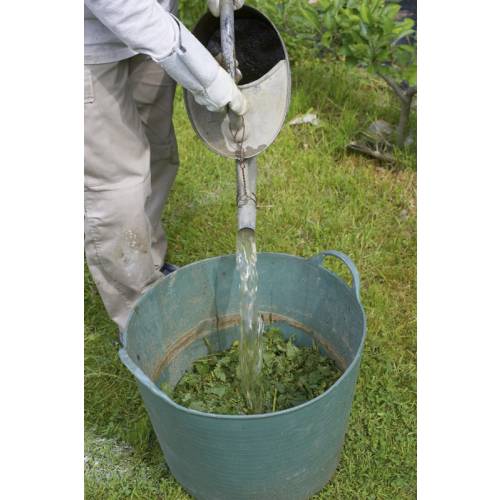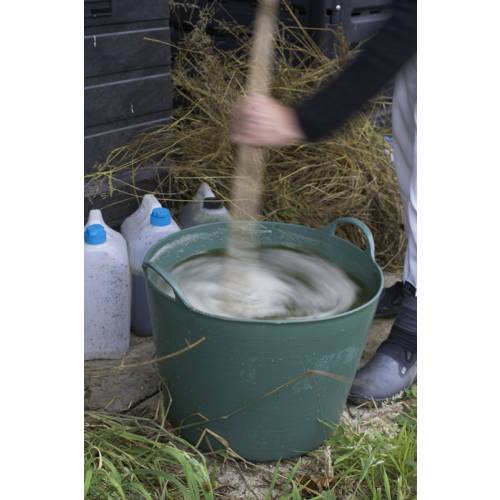
Ecological Garden
Macerations : Natural preparations
- Details
-
When you garden in an ecological manner, you put aside chemical products in favor or more natural preparations. These however do demand care in their making to ensure that the desired effect is achieved and that they do not harm the environment, which would be last straw!
Liquid manure or maceration?
The simplest natural preparations to make and use in the garden are the macerations of plants in water. By default, they are often called "liquid manure" but in fact, liquid manure is a fertilizer whilst a maceration has many other uses depending on the stage when it is used. The plants used are common and only slightly toxic: nettles, common horsetail and comfrey are some of the classic ones. Sometimes other plants can be used depending on your experience.
The recipe is very simple: put 10 l of water (rainwater if possible) into a an inert container like a plastic bin then add 1kg of roughly cut up fresh leaves (100 g if they are dried). Stir it as often as possible at least every day; it should be kept in a cool shady place.
Young, against insects
During the first few days, the maceration has a dark green colour. At this stage, it can be used to limit the proliferation of biting insects on infested plants. It needs to be filtered through an old cloth and then sprayed; the maceration should be diluted one part maceration to one part water. This will not kill the insects but will stop their reproduction. Be careful: delicate plants (seedlings, ferns and fine leaved plants) may suffer. Helpful insects as well!
Semi ripe, against fungus
By leaving the maceration to continue brewing for 7-8 days, still stirring it daily it will get stronger. If it starts to have a bad smell, it is because it is not being stirred enough. At this stage, the filtered product should be diluted with 10 parts water before use. It is used as a spray on the leaves of plants against diseases caused by fungus such as powdery mildew (white powder on the leaves) and rust (orange powder) etc. Once again, sensitive plants may suffer. Only spray in overcast weather and preferably in the evening. The risk to insects is limited.
Fermented, liquid fertilizer
If you continue to brew up this maceration for a couple of weeks or more, the liquid will start to clear and resemble a dark coloured tea. The time this takes can vary depending on the season: it can be quicker or longer. The use of dried rather than fresh leaves will shorten the time needed. The maceration when fully fermented acts as a liquid fertilizer. Dilute it with five parts water and water it around the base of growing plants especially those grown for their leaves : leafy vegetables or those perennials with decorative foliage for example. Use it on a damp soil and only if it is needed. This watering is the same as putting liquid fertilizer around the base of the plant!
It is not infallible
Begin by making a few trials on some of the less delicate plants. The use of natural preparations like macerations requires some experience. If you use them without any attention then you risk of being very disappointed. Even though they are bio and respectful of the environment these macerations cannot replace the other good methods in the bio garden, in particular that of always paying attention to what is going on in your garden! - Photos (3)



